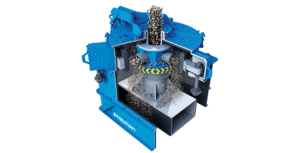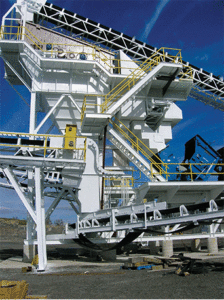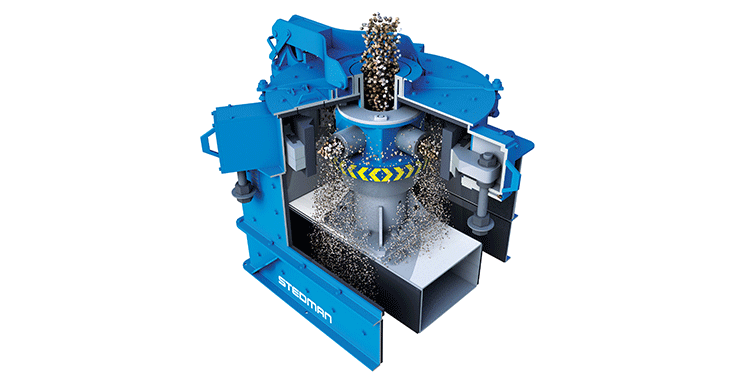Quarry safety is everyone’s responsibility. It is critical to the safety of operators and others that reasonable care and judgment be exercised at all times.

Unfortunately, as we all know, proper care and sound judgment are not always exercised. Despite all of the advancements in technology to improve quarry safety, one factor remains the same after all these years: the human factor. The human factor is what most commonly leads to errors.
Most accidents are caused by failure to observe simple safety rules and precautions. Operators must be aware of what’s happening around the working area to recognize hazards before they become accidents, and they must avoid creating situations that can cause hazards or accidents.
Operators must also be aware of hazardous attitudes. Those with this kind of attitude disregard rules and regulations, common sense and physics. It is everyone’s responsibility to recognize hazardous attitudes and stop them before any action is taken.
There are a variety of personality types out there. In this article, five bad personality types that affect safety are paired with examples of the most common Occupational Safety & Health Administration (OSHA) safety violations for 2018, as they apply to impact crushers and other potentially hazardous equipment. Next to conveyors, impact crushers such as cage mills, horizontal and vertical shaft impactors, and air swept fine grinding mills are potentially some of the most dangerous quarry equipment to work around.
1. The resigner. “What’s the use?”
Lack of personal protective equipment, specifically respiratory and eye/face, are respectively the fourth- and 10th-most-common violations in OSHA’s annual report. “What’s the use,” you might say? Resignation to a problem isn’t a solution. Don’t get a rock chip in your eye because you wanted to be a nice guy and not ask someone for eye protection.
Whether or not you get a respiratory illness from breathing rock dust isn’t a matter of being lucky or not. When things go badly, it won’t be because someone is out to get you. It will be because you didn’t wear a respirator specifically approved for the hazard.
What’s the use? The benefits are you’ll have happier employees, higher uptime, easier troubleshooting and reduced off-spec product.
The National Institute for Occupational Safety & Health (NIOSH) recently released a beta version of monitoring software that helps mines more effectively monitor worker exposure to hazardous respirable crystalline silica. The antidote to the resigner is: “You’re not helpless. You can make a difference.”
2. I’m invincible. “It won’t happen to me.”

Lack of proper machine guarding is the ninth-most-cited OSHA violation. A number of people believe mishaps happen to others but never to them, yet they know mishaps can – and do – happen and that anyone can have an accident.
Still, they never believe they will be involved. People who think this way are likely to take chances, increasing their risk.
Who is responsible? It takes leadership management with the commitment to empower facility managers to get employees engaged.
Machine guarding is only the last defense. You should remove rings, necklaces, jewelry and neckties. Do not wear loose-fit clothing. You do not want to get something caught in a rotating drive draft and be drawn into machinery.
The antidote to invincible thinking is to realize: “It could happen to me.”
3. Get ‘er done. “Do something quickly.”
Accidents with powered, industrial load-carrying equipment are OSHA’s seventh-most-cited violation.
Jumping onto a forklift to get a job done right away may not be the right action. Some people frequently feel the need to do something immediately without thinking about the risk they are taking or evaluating the best choice. Doing the first thing that comes to mind is almost never the best decision.
What could go wrong at your plant? Review your safety issues during the specification and commissioning of equipment. Question how forklifts, front-end loaders, trucks and man lifts are used; how equipment is tested; how personnel are trained and supervised; and how new risks are assessed. Clearly mark traffic paths and include blind-corner fish eye mirrors.
Consider the following: Is the cribbing you placed to repair a flat tire appropriate for a front-end loader? Is that lifting chain properly rigged? When working near equipment, make eye contact with the equipment operator and directly communicate your intended movements. Before you jump into that man-basket secured to a shovel by a weldment that doesn’t look right to get the job finished, consider why you’re rushing in.
The antidote to impulsivity is: “Not so fast. Think first.”
4. Macho man. “I can do it.”
Lockout/tagout violations were the fifth-most-cited violation in 2018 through Sept. 30. Taking chances is foolish. Those who take chances always try to prove they are better than others. These people think, “I can do it, I’ll show them,” and try to impress others by taking unnecessary risks.
Consider how your plant handles operational safety issues. Do you have regularly scheduled maintenance and inspection logs? How clean is your quarry? Are the proper spare parts available? Is it easy to find out how to properly service and maintain equipment?
Never troubleshoot electrical systems when you can come into contact with the high voltage typically found in control centers. Always install the necessary lockouts and tags needed to isolate equipment from power sources before removing any guards or covers or performing any maintenance or adjustments.
Standing on an energized conveyor is never a good idea, and pulling the stop cable isn’t a lockout.
The Mine Safety & Health Administration in 2018 awarded Penn State University $50,000 to plan, design, develop and evaluate a three-module training program that will enhance safety regarding inspecting, working around and performing maintenance on conveyor belts.
The antidote to being macho is: “There are old quarrymen and bold quarrymen. There are no old, bold quarrymen.”
5. The anti-authority. “Don’t tell me.”
General fall protection is OSHA’s top violation. However, some people do not like anyone telling them what to do. Their motto is, “I’m not going to fall, one hand for the man, one hand for the ship.” They may regard rules, regulations and procedures as silly and time-consuming. But remember: It’s always your prerogative to question authorities if you feel something is in error.
Do you know the health, safety and environmental (HSE) regulations for your operation? The HSE safety goal is “less than one workday lost per million hours worked.” Where are your safety datasheets? NIOSH offers hazard recognition programs and toolbox talks to bring your crew up to speed.
Quarries have many high places where people can fall. Even falling off a portable plant while it’s not moving can be fatal.
The antidote to anti-authority is: “Follow the rules. They are usually right.”
Summary
Specific requirements, precautions and hazards associated with impact crusher equipment operation and the general work area must be communicated to, and understood by, everyone involved in the operation. Maintenance of this equipment is crucial in order to avoid injury or death to personnel or damage to equipment.
Mining is not possible without some risk, but unnecessary risk comes without a corresponding return. Make it a systematic approach to consistently determine the best course of action in response to a given set of circumstances.
Five steps for good decision-making around hazardous equipment are:
1. Identifying personal hazardous attitudes
2. Using behavior modification techniques to diffuse them
3. Recognizing and coping with stress
4. Developing risk assessment skills
5. Using all available resources
Perhaps it will be a video game that helps you develop a culture of safety, meaning empowering employees to make observations, report unsafe conditions and having the authority to stop work without retribution. NIOSH recently funded a $1.6 million grant to develop more effective mine safety training methods. Researchers will develop training that uses “serious” computer games designed to replicate a realistic mining environment, where workers will be put in dynamic situations to make decisions and see the consequences.
Proper training is one of the most fundamental requirements for successful, reliable production. With crushing, begin with the crusher’s operation and maintenance manual and incorporate the manual’s suggested routine maintenance schedule into the maintenance team’s duties. Appoint a lead person for each crusher as the “go-to” for that machine. This person is the historian for the unique operational adjustments the producer incorporates for raw feed and product requirements.
Equipment manufacturers are the final word on any issues with their products. If you’re not sure what you’re doing is right, ask them. There are no dumb questions.
Eric Marcotte is the inside sales manager at Stedman Machine Co.











